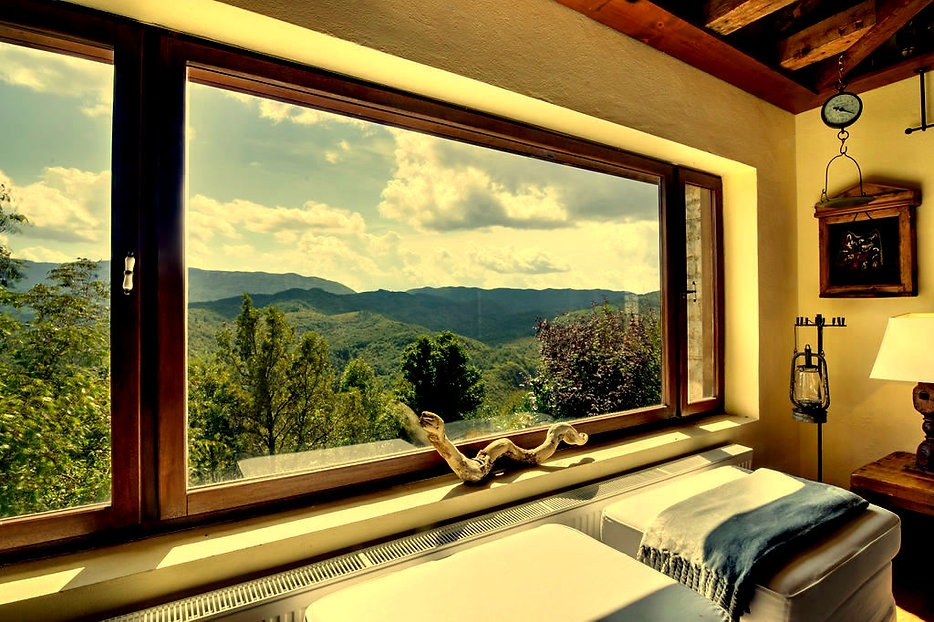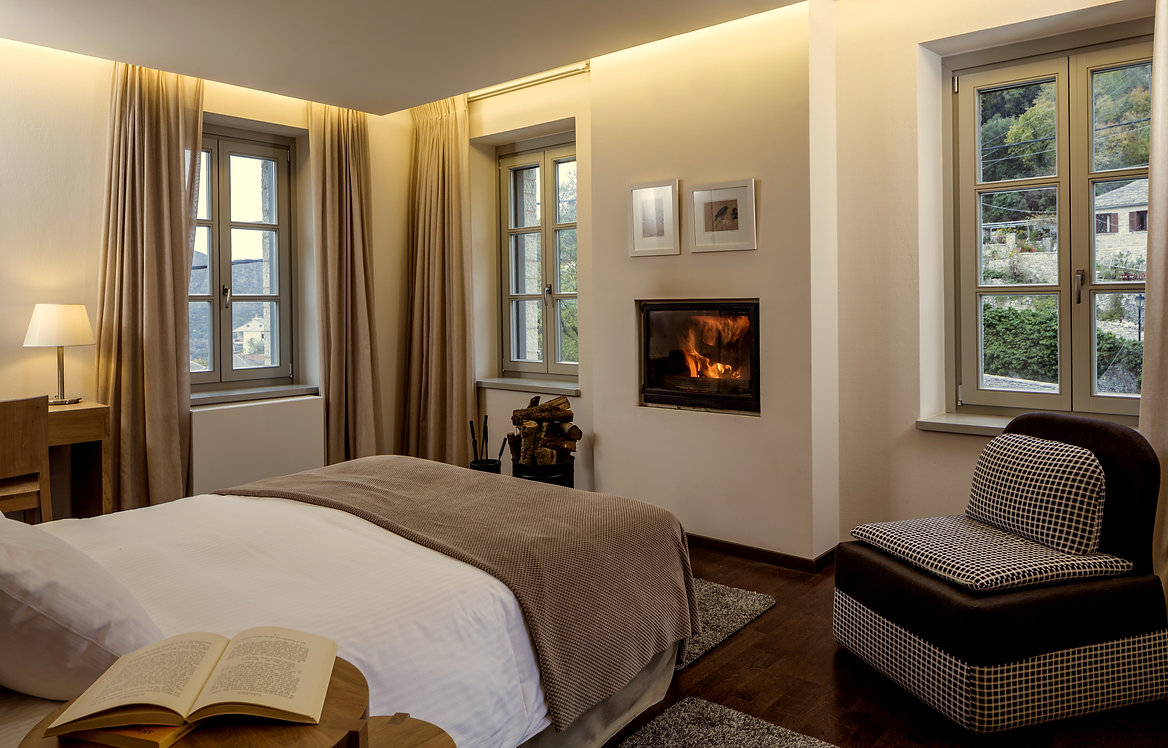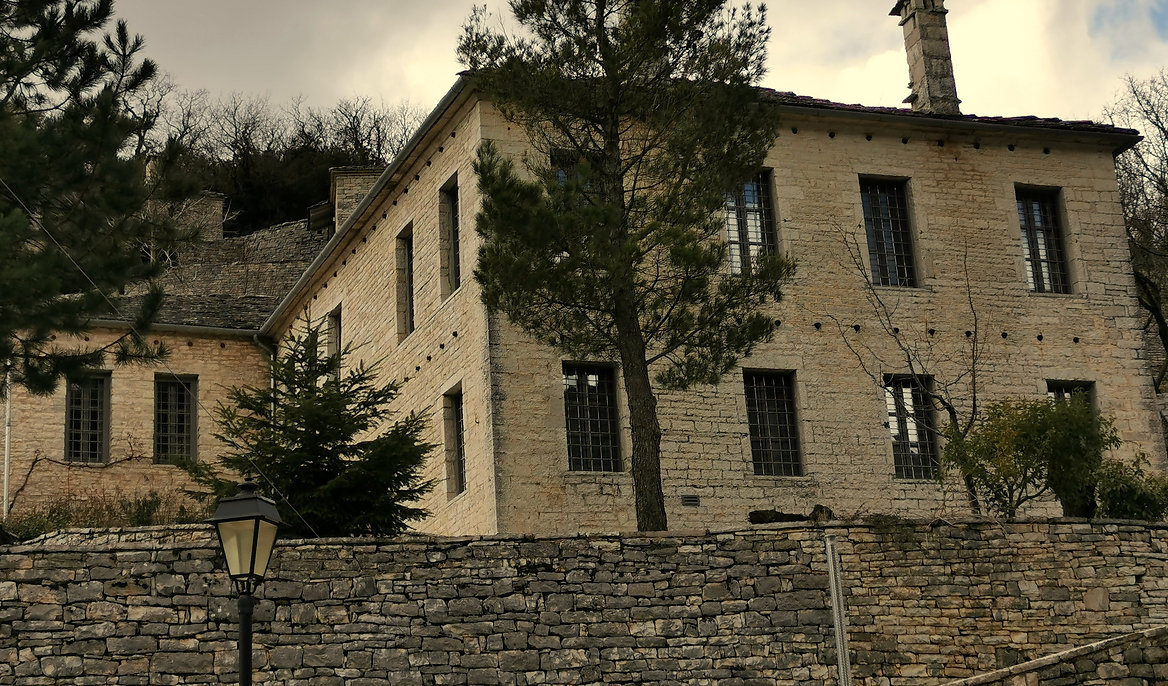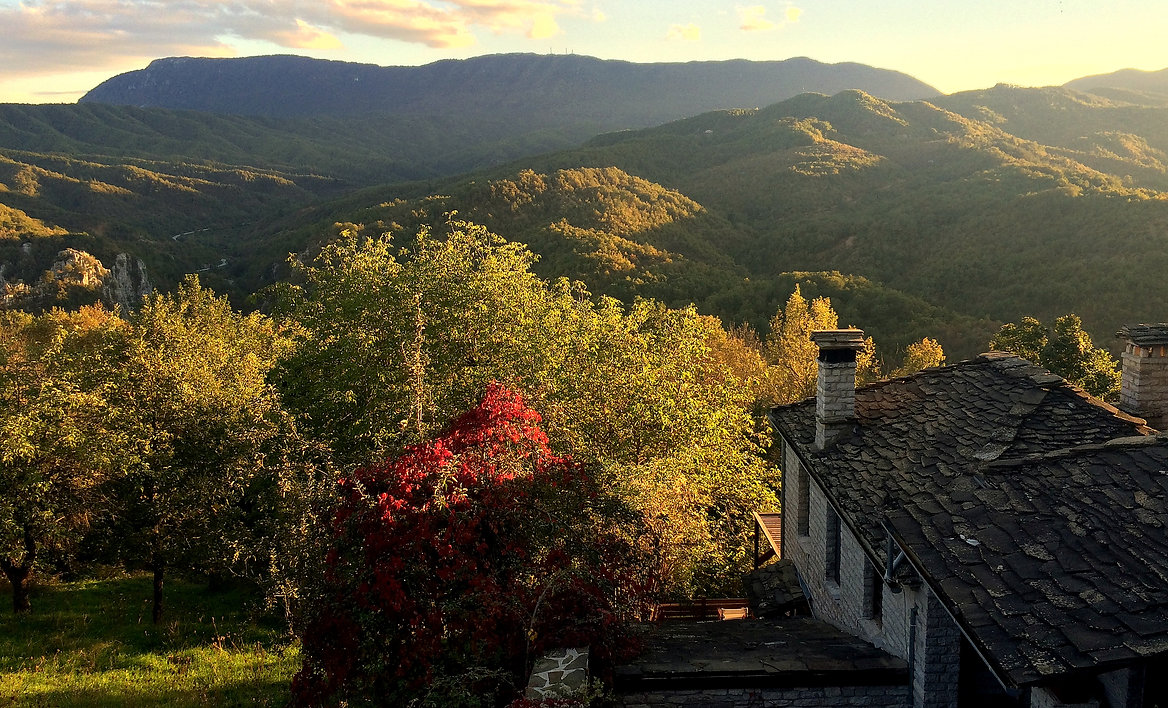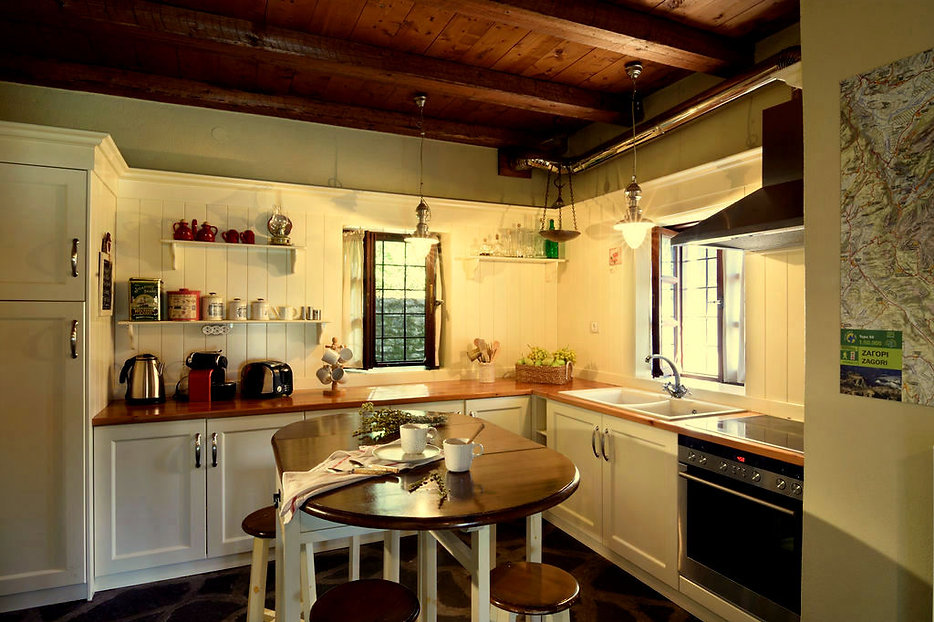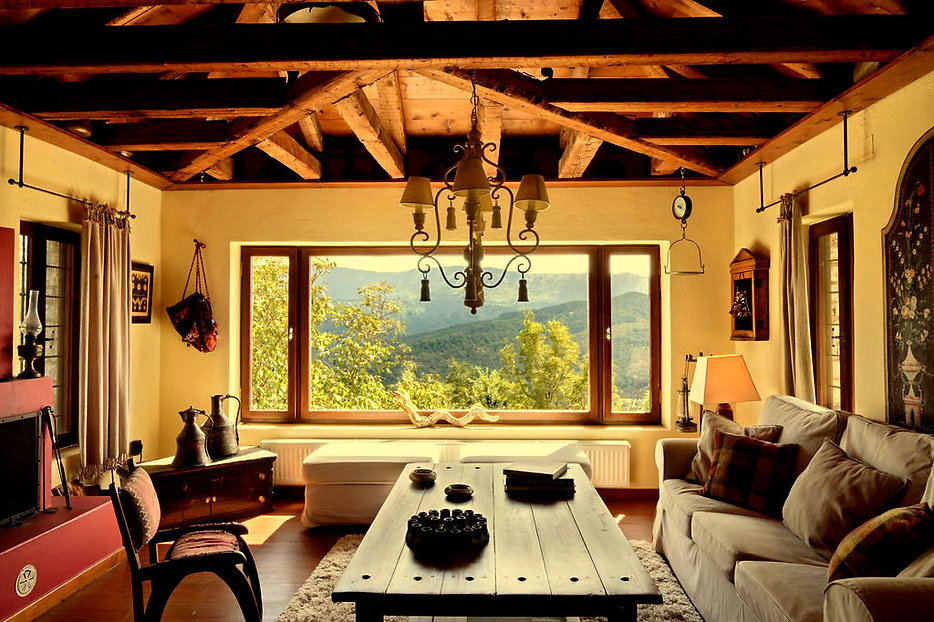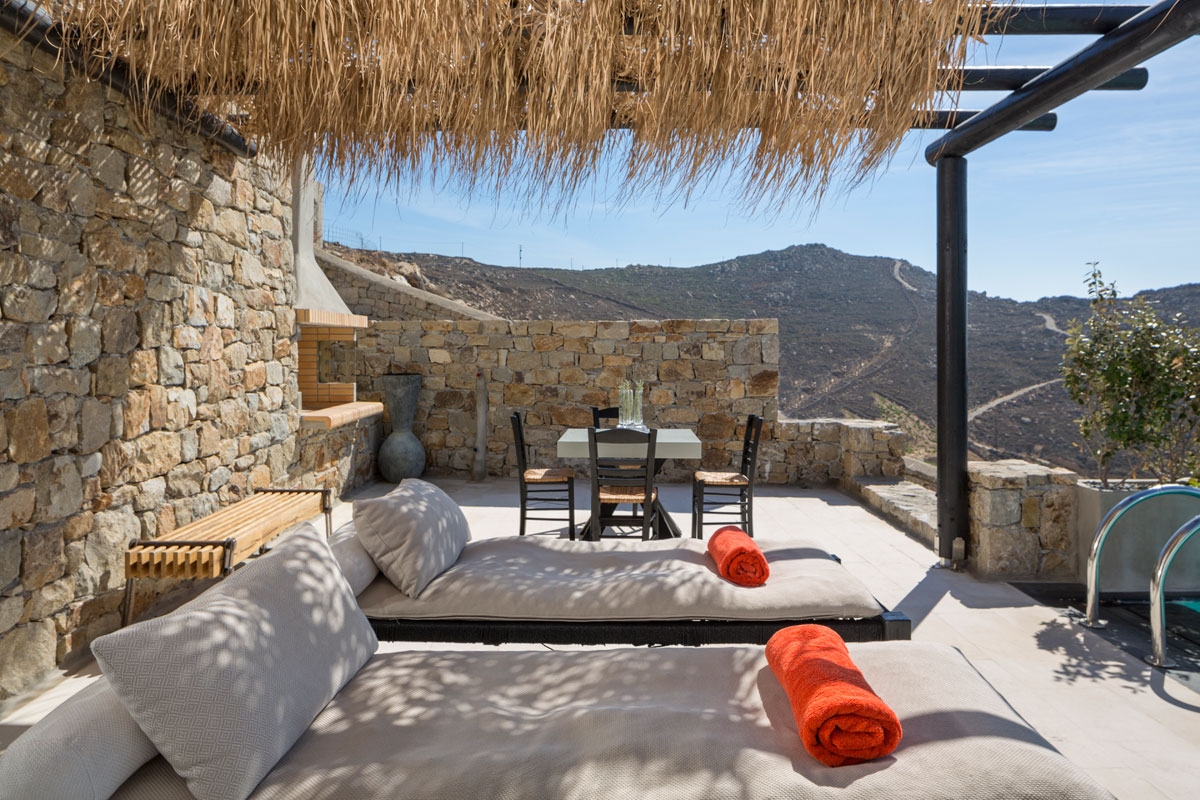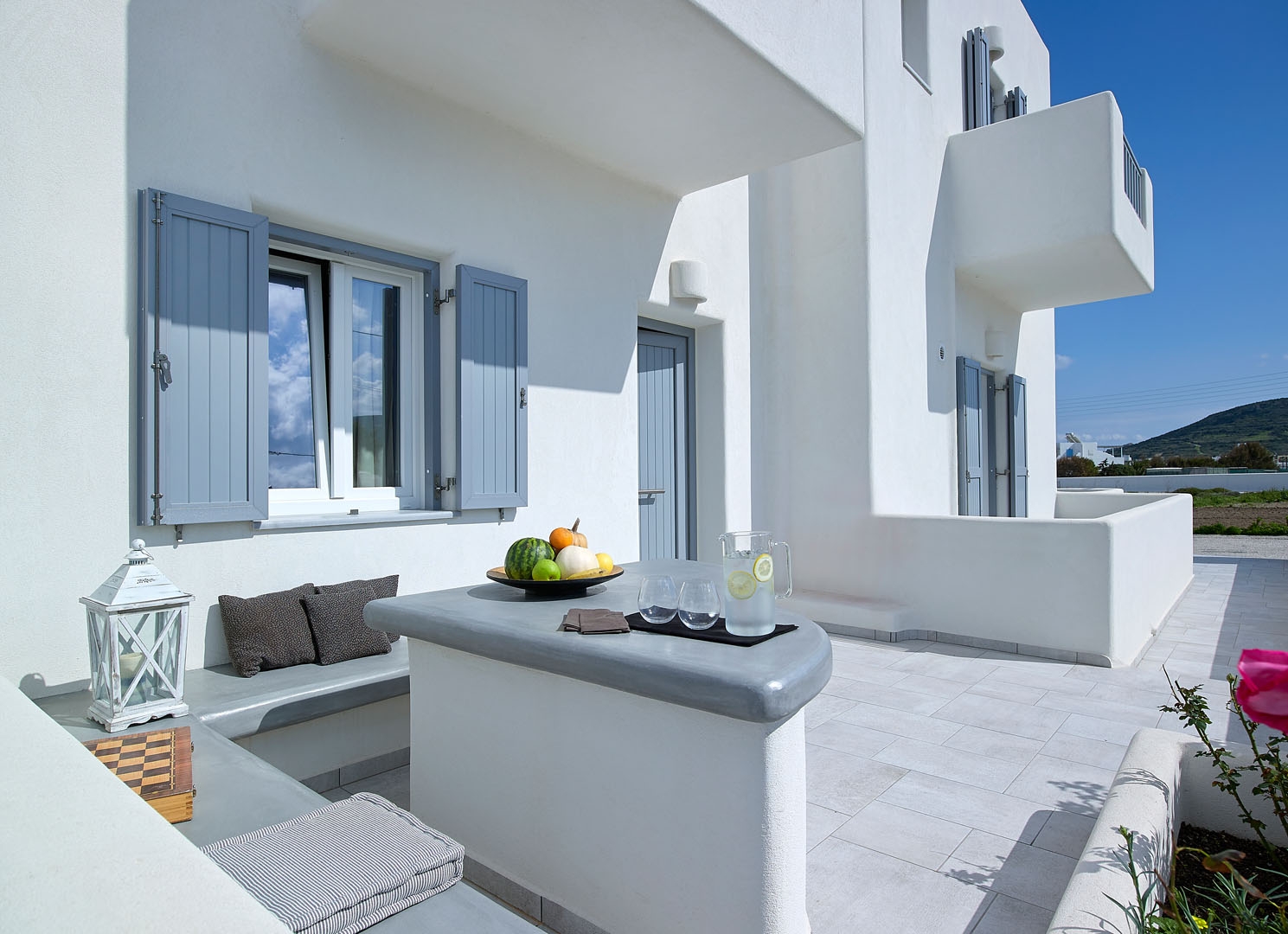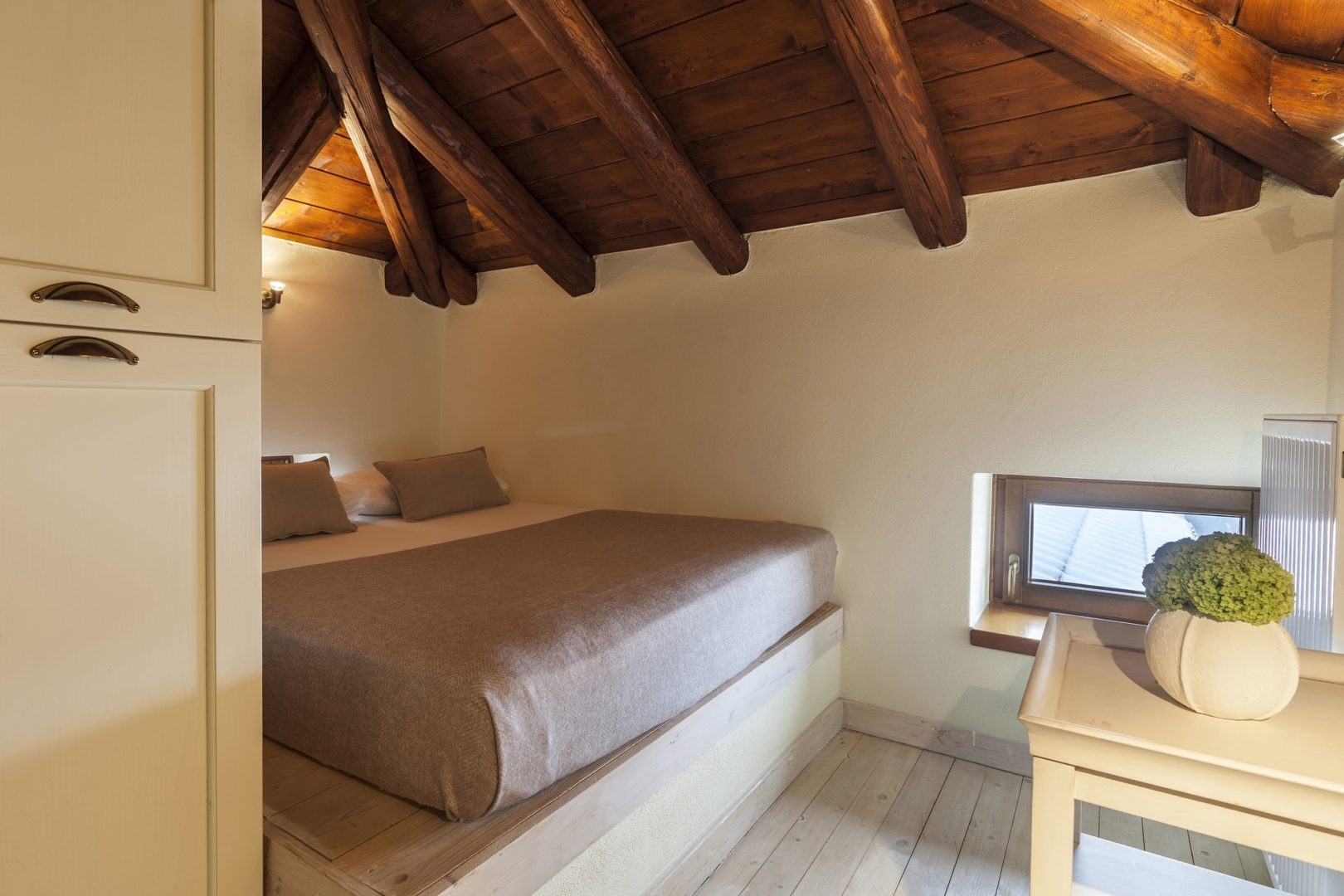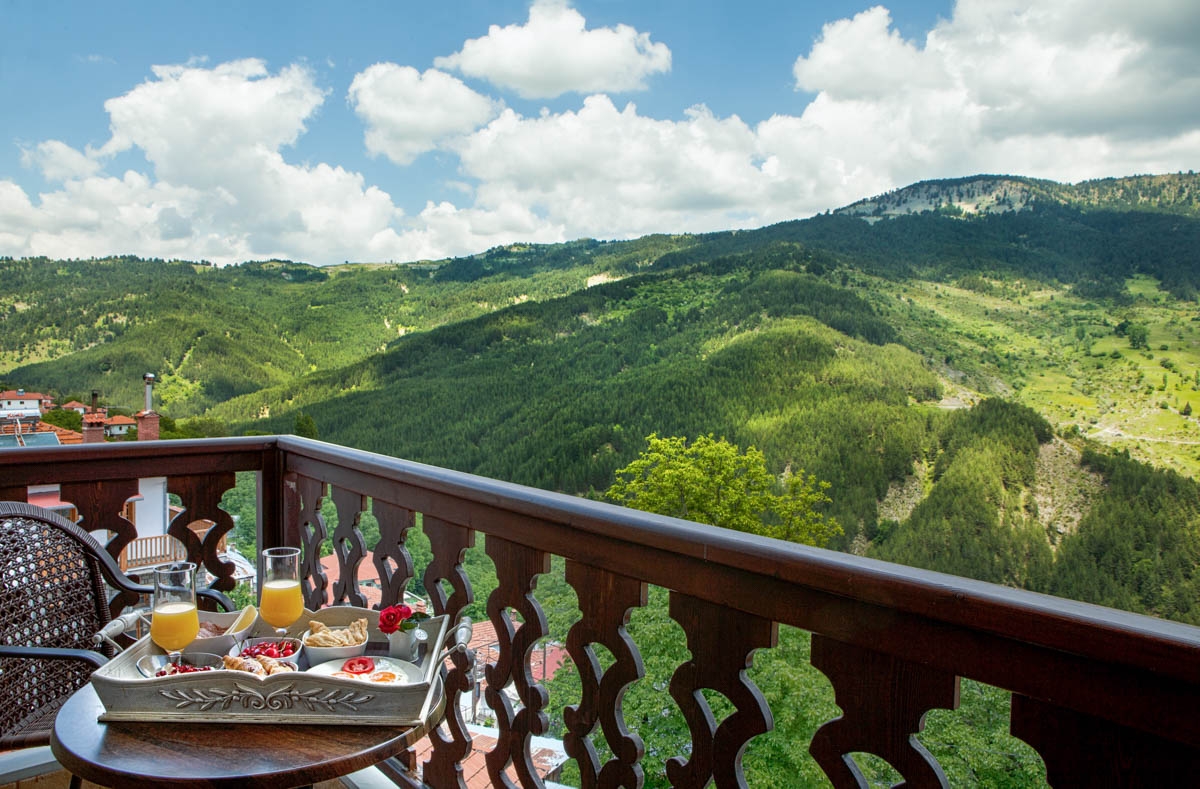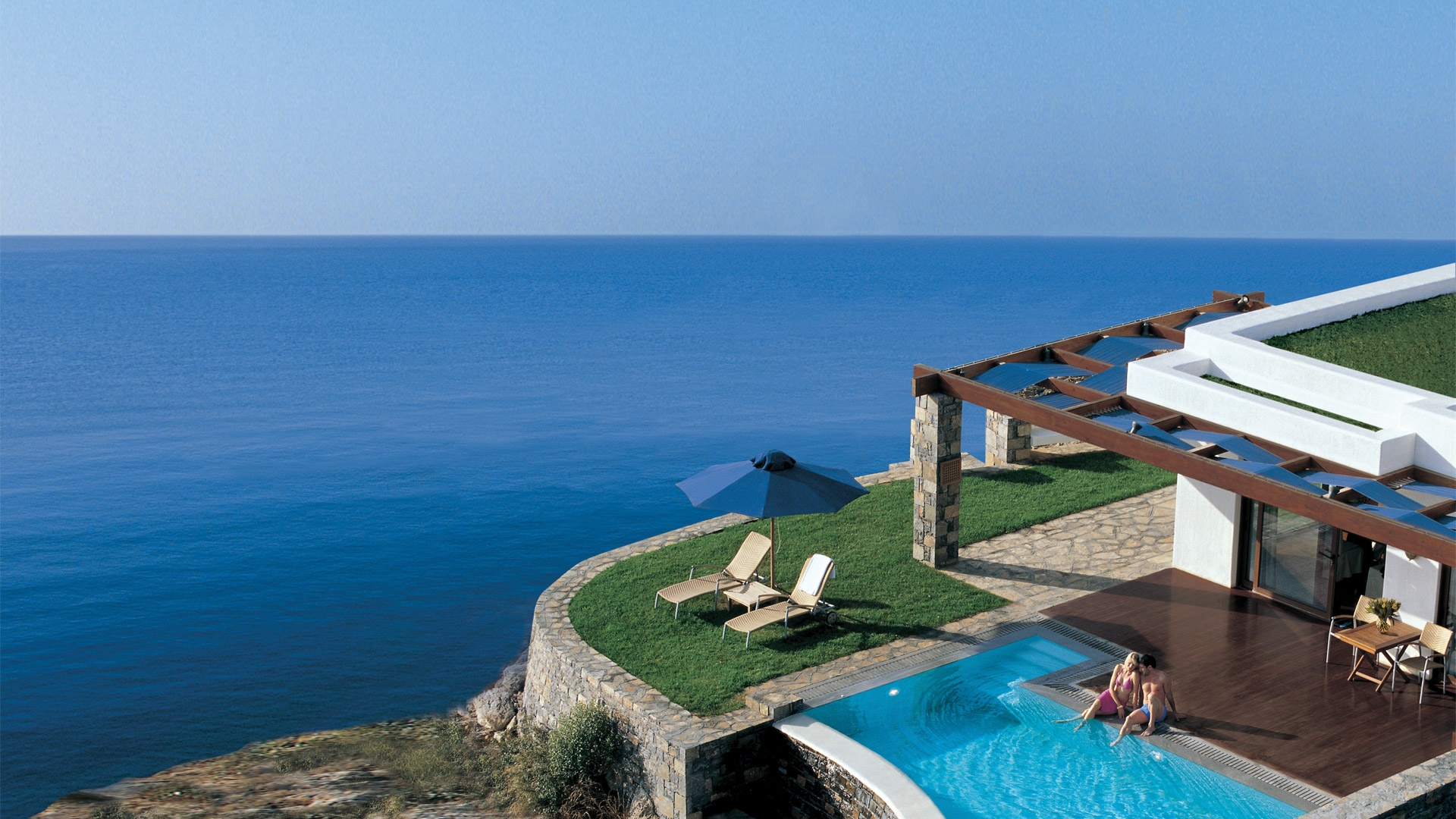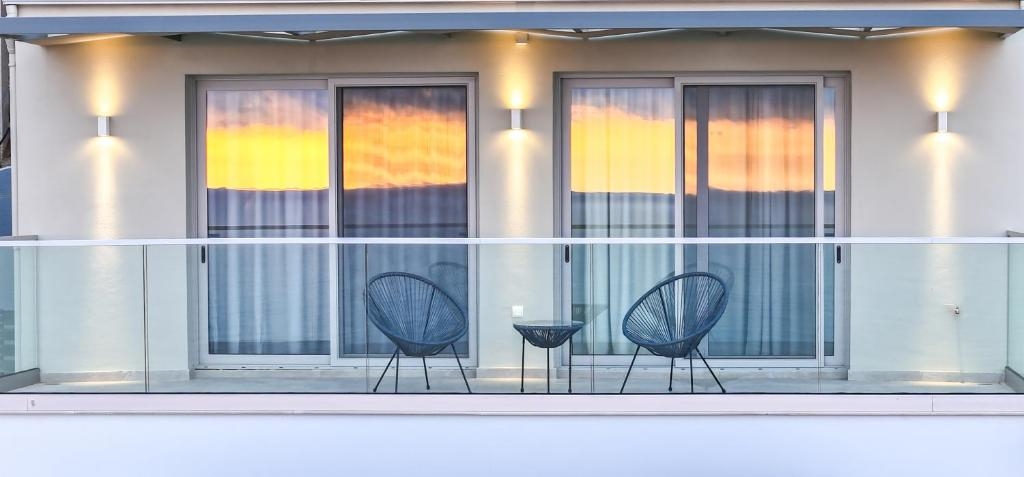Our guesthouse is in Ano Pedina village in central Zagori, near the Vikos Canyon. The village is at a distance of 35 km (30 min) from Ioannina and is connected to the city via very good regional roads with particularly fine scenery. The airport is 30 km (25 min) from the village.
The guesthouse consists of three main buildings and seven studios perched on one of the five hills that surround the village. In two of the main buildings there are seven rooms, while in the third, we house our restaurant for breakfast and our conference and retreat facilities.
Tranquillity reigns at MONOPATIA creating a delightful and relaxed atmosphere. The landscape changes constantly according to the time of day, the season, the weather. The beauty of the natural environment outside is reflected in the earthy hues of the interior architecture. Each space has its own individual character while attention to detail accompanies understated luxury throughout. Most of the buildings – fourteen in total – were initially built in the 19th century and were renovated in 2010, in full respect to the local traditional style of architecture.
The Area
The Zagori Region stretches over more than 1,000 sq. km with altitudes ranging from 500 to 2,500 meters. It is part of the Vikos-Aoös National Park in the region of Epirus, in the northwestern part of Greece. It is a place of great natural beauty and geological significance, while it also boasts a strong cultural identity, steeped in tradition.
Thanks to its wild and unspoiled nature and its distinctive, traditional architecture, Zagori is one of the most strictly protected areas in Greece. It falls under the Greek law for the conservation of the environment, as well as the UNESCO and NATURA regulations. The NATURA 2000 network (a network of nature protection areas in the territory of the European Union) due to its richness of flora and fauna and its great variety of endemic species. In 2010, the area of Zagori was included in the Vikos-Aoös Geopark, a member of UNESCO’s Global Geopark Network, rendering it an internationally acknowledged natural monument. Geoparks are well defined territories which include distinctive geological, natural and cultural characteristics. Human activity of the 18th and 19th centuries, such as the many stone built traditional villages with their surrounding monuments, along with the prehistoric remnants of human activity (Paleolithic hunting bases, Neolithic settlements, etc.) more than satisfy the requirements for an extraordinary and unique geopark. The region’s settlements are also strictly supervised by the Architectural and Archaeological authorities due to their cultural value.
Zagori is also the area with the most rainfall in Greece; this is clearly visible in its landscape, covered almost entirely by forests, which provide habitats of great ecological value.
Here, the harmonious coexistence of nature and mild human intervention is perfectly showcased.

